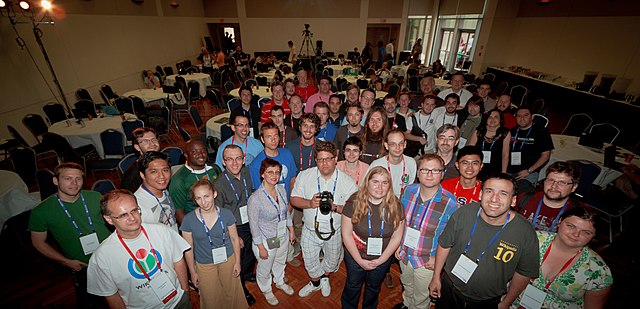Please try to avoid these common errors, as they make your photographs much less useful.
Click on the right of the main image to step through the errors.
In the past year, we’ve often had the question “why are you doing this?”. Many people outside the Wikimedia movement assume at first that this must be a professional job for me, as one of the organizers – and when you explain that we’re doing this almost fully by volunteers, and hundreds of them, people are often flabbergasted.
 Volunteers who helped organize Wiki Loves Monuments. Photo: Pierre Selim, CC BY-SA
Volunteers who helped organize Wiki Loves Monuments. Photo: Pierre Selim, CC BY-SAWikipedia is written by volunteers, and Wiki Loves Monuments is primarily organized by volunteers. In that sense, both are very much the same. But Wiki Loves Monuments doesn’t stand on itself as a project, like Wikipedia does. So when people think about why volunteers are working on organizing this mega photo contest, they first assume that it must be about all the photos we’re collecting – because we all love photography.
And of course, that plays a role. But there’s more to it. For example, it is a great way to develop more skills and enthusiasm in our chapters. Wiki Loves Monuments is a well documented initiative, which makes it easier to organize. Some infrastructure is already in place, and it is a good excuse to get in touch with potential partners who are into cultural heritage in their country. The combination of promoting local cultural heritage, a competition element and Wikipedia has proven to be a golden one.
But more importantly, as a movement we have been working to get more people involved in contributing to Wikipedia and its sister projects. And that is just what Wiki Loves Monuments is: an easier and nicer way to contribute content to Wikipedia! You can upload photos which you know will be useful, and you can see the result of it rather quickly. The interface is simplified and if you get the hang of it you already know a topic you can move forward. We get in touch with people we’d normally hardly meet: people who love cultural heritage you can find on the streets: houses, churches, temples, castles or other tangible heritage. Some of these people, often a bit older than the average Wikipedian (27 year old man), might become more interested in editing on cultural heritage topics on Wikipedia.
But maybe the key reason why we’re doing this all is awareness. Making people aware that Wikipedia is run by volunteers. Making people aware that Wikipedia can be edited by anyone. Making people aware that they have much valuable material that can be shared under a free license. Making people aware that they can choose for their photos and writings to lie on the shelf, unused, or to be published under a free license, be re-used by others and built upon. Working, step by step, to that world where every person can share in the sum of all human knowledge.